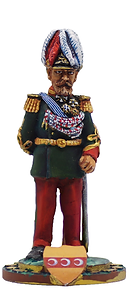top of page


Kingdom of Italy

Faith is the protector of Kingdom

In the late 19th and early 20th century, Italy emulated the Great Powers in acquiring colonies, especially in the scramble to take control of Africa that took place in the 1870s. Italy was weak in military and economic resources compared to Britain, France and Germany. Still, it proved difficult due to popular resistance. It was unprofitable due to high military costs and the lesser economic value of spheres of influence remaining when Italy began to colonize. Britain was eager to block French influence and assisted Italy in gaining territory of the Red Sea. The beginning of colonialism came in 1885, shortly after the fall of Egyptian rule in Khartoum, when Italy landed soldiers at Massawa in East Africa. In 1888, Italy annexed Massawa by force, creating the colony of Italian Eritrea. The Eritrean ports of Massawa and Assab handled trade with Italy and Ethiopia. The trade was promoted by the low duties paid on Italian trade. Italy exported manufactured products and imported coffee, beeswax and hides. At the same time, Italy occupied territory on the south side of the horn of Africa, forming what would become Italian Somaliland. The Treaty of Wuchale, signed in 1889, stated in the Italian language version that Ethiopia was to become an Italian protectorate, while the Ethiopian Amharic language version stated that the Ethiopian Emperor Menelik II
could go through Italy to conduct foreign affairs. This happened presumably due to the mistranslation of a verb, which formed a permissive clause in Amharic and a mandatory one in Italian. When the differences in the versions came to light, in 1895 Menelik II abrogated the treaty and abandoned the agreement to follow Italian foreign policy. Because of the Ethiopian refusal to abide by the Italian version of the treaty and despite economic handicaps at home, the Italian government decided on a military solution to force Ethiopia to abide by the Italian version of the treaty. In doing so, they believed that they could exploit divisions within Ethiopia and rely on tactical and technological superiority to offset any inferiority in numbers. As a result, Italy and Ethiopia came into confrontation, in what was later to be known as the First Italo-Ethiopian War. The Italian army failed on the battlefield and was overwhelmed by a huge Ethiopian army at the Battle of Adwa. At that point, the Italian invasion force was forced to retreat into Eritrea. The war formally ended with the Treaty of Addis Ababa in 1896, which abrogated the Treaty of Wuchale, recognizing Ethiopia as an independent country. The failed Ethiopian campaign was one of the few military victories scored by the Africans against an imperial power at this time.
bottom of page















